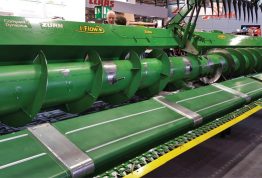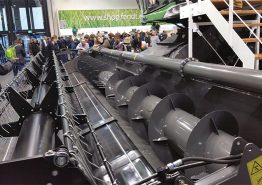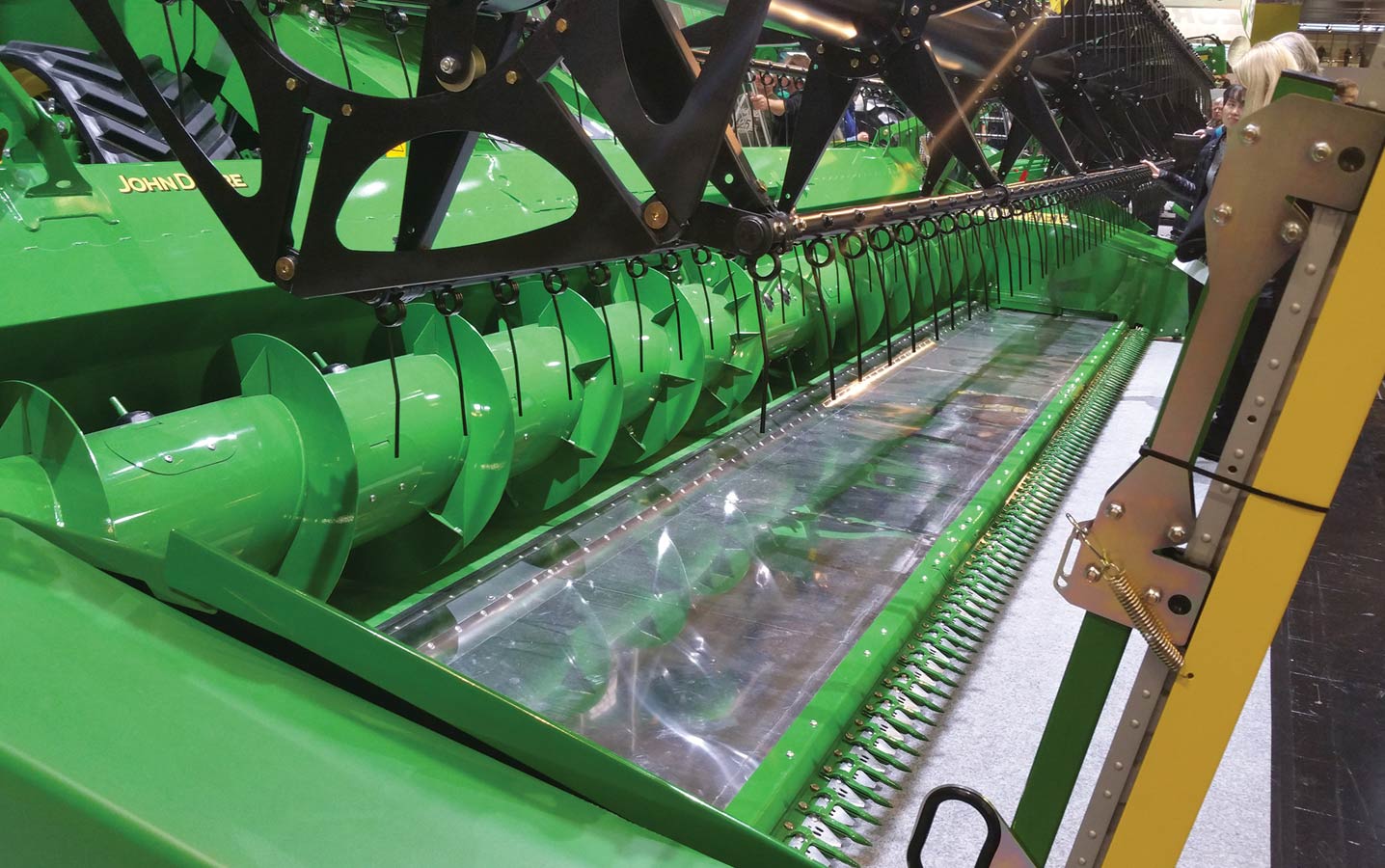Harvest tech lures me to Agritechnica
Interest in straight cutting canola is growing in Western Canada and we at the Canola Council of Canada get a lot of questions on what machinery is best suited for the job. Straight cutting is the norm for oilseed rape in Europe. My trip to Agritechnica in Hanover, Germany was mainly to see what equipment European farmers use to harvest their crops and the reasons for their use.
Agritechnica spreads over 30 large buildings at the Hanover convention centre. One of the buildings alone would nearly house any one of the Western Canadian indoor machinery shows. Just under half a million visitors attend the show. With its shear size, the show requires a minimum three to four days to see most of it. Agritechnica is held every two years in November. The next one is November 12-18, 2017.
Agritechnica showcases newly-released models as well as technology that will emerge in the coming years. Another interest for me was precision advancement in yield monitor technology. Improved yield monitoring would go a long way toward better on-farm testing and make programs like variety testing much more precise and easier to accomplish.
Headers
All the manufacturers I met with had headers with extendable cutting bars or adapters to extend the knife on a regular header. I had seen these in North America and my original thought was that the bar extended out front of the reel was just to catch seed that shelled from the reel pulling it in. It turns out that is only part of the reason. Another primary benefit is reduced loss at the feederhouse. With the larger amount of material coming in from the sides and transitioning into the feederhouse, material tends to build up. Seed can be lost at the centre of the header.
John Deere is testing its new Active Yield monitoring system on corn and soybeans in North America.
Another header concept I had not yet seen in North America was a pickup-style draper belt behind the knife. This allowed for an extended knife cutting system but eliminates the feeding issues with short
cereal grains.
I visited four companies that offer specialty headers or adapters for straight cutting canola. They were Zurn , Geringhoff, New Holland and Biso.
Most of the headers are fairly similar in design, with cutting bars that can be extended for cutting canola or oilseed rape and retracted for cutting cereals. Biso has an extended cutting bar attachment that can easily be added and removed from existing headers as you change crops. All headers are auger type. The few drapers at the show were imported from North America.
Yield monitors


One company I spoke with, John Deere, was just releasing in Europe a new yield monitoring system able to calibrate itself using sensors in the grain tank. This would be an important advancement as one of the primary issues with yield monitors is the lack of proper calibration. A year after my visit to Agritechnica, I spoke again with the manufacturer to find out the new system is being trialed in corn and soybeans in North America this crop year. Canola will follow in subsequent years.
The Active Yield calibration system has three weighing cells inside the grain tank to measure the vertical forces as the filling level rises. The calibrated system compares these forces with the data supplied by the yield sensor, taking into account the moisture sensor reading.
John Deere claims the inaccuracy settles around plus or minus three per cent, adding that with the current standard yield monitor, “such a level of accuracy can normally be achieved only by skilled operators who calibrate several times a day.”
The company adds that the system also compensates for a growing inaccuracy of the readings over several harvest campaigns due to wear and tear of the elevator chain.





